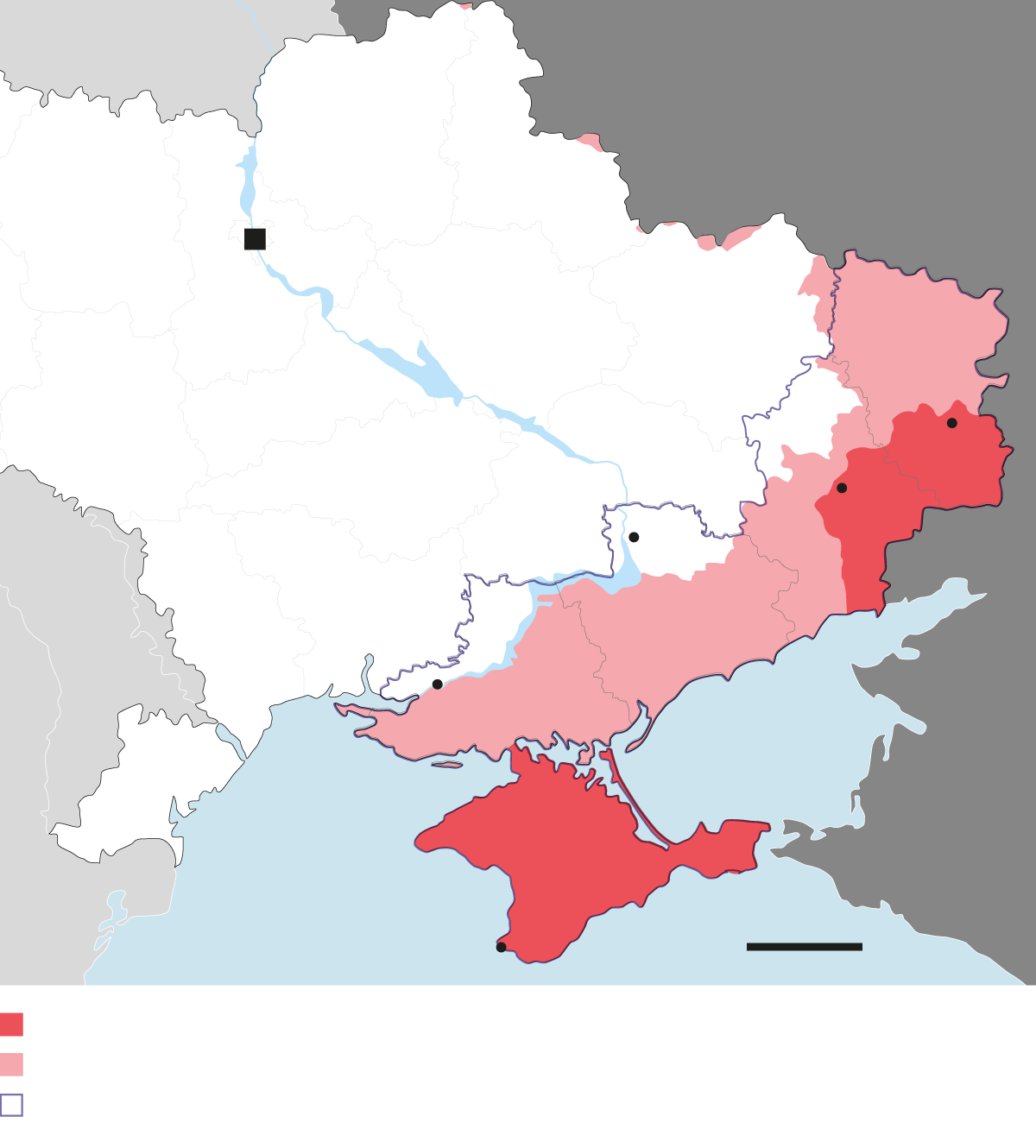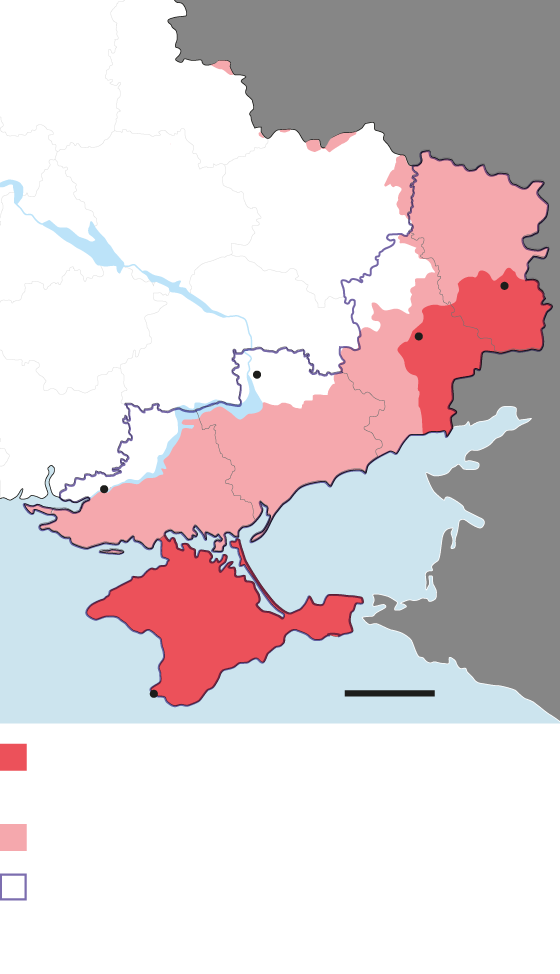What does the peace plan that Trump sent to Zelensky say?
The pact was negotiated in secret between Washington and Moscow and is difficult for Kyiv to accept.


MoscowThe peace plan that Donald Trump has presented to Volodymyr Zelensky It is not as catastrophic for Ukraine as the version leaked by Russian envoy Kirill Dmitriev. However, it contains many of Vladimir Putin's demands and is therefore difficult for Kyiv to accept, especially regarding the territorial issue. The Ukrainian leader has one week to respond and, moreover, is in a delicate situation, embroiled in a corruption case and receding in the foreheadHowever, even if it satisfies some of the Kremlin's key points, it is likely to fall short for the Russian president, who has already warned that he desires an unconditional defeat of Ukraine.
Territorial renunciations
The leaked draft of the plan anticipates international recognition of Crimea, Donetsk and Luhansk as Russian territory and the withdrawal of Ukrainian troops from the areas of Donbas that Kyiv still controls, converting them into a demilitarized zone belonging to the Russian Federation. In exchange, the front would be frozen at the line of contact, and Russia would relinquish the parts of Kherson and Zaporizhzhia currently under Kyiv's control. Furthermore, the Kremlin would also withdraw its troops from the remaining Ukrainian provinces it currently occupies but which were not annexed under the Constitution (Kharkiv and Dnipropetrovsk).
This point would be difficult for both sides to accept. On the one hand, Zelensky has always maintained that he will not cede an inch of Ukrainian sovereignty; and, on the other, Putin has considered Kherson and Zaporizhzhia to be part of Russia for the past three years, although it is true that his army will find it very difficult to conquer them completely.
Reduce the Ukrainian army
The peace plan also stipulates that the Ukrainian army be reduced to 600,000 soldiers. It is currently estimated to have between 800,000 and 850,000 troops, compared to around 250,000 before the war. This figure is far higher than the 85,000-troop limit imposed by the Kremlin in the 2022 Istanbul talks and contradicts Putin's long-standing obsession with demilitarizing the country. In fact, Ukraine would still have the largest army in Europe after Russia.
Although initial leaks suggested Kyiv would relinquish certain types of weaponry, the draft does not include restrictions on the possession of long-range weapons or prohibitions on heavy weapons (bombers, submarines, ballistic missiles). These very issues were included in the ceasefire memorandum drafted by Russia in June.
Security guarantees
For the first time, the United States has stated in a draft agreement that "Ukraine will receive reliable security guarantees." The vagueness of this statement may be as worrying for Zelensky—because the details are not specified—as it is for Putin—because it opens the door to forms of international military assistance that are a red line for Moscow. The plan opens Ukraine's doors to the European Union, but it takes for granted two of the Russian government's demands: its non-joining of NATO, both now and in the future, and the non-deployment of NATO troops in the country. In return, Russia commits to not attacking Ukraine again. If it does, it risks a "coordinated and decisive" military response, the "revocation of recognition of the new territories," and the "reimposition of global sanctions." Without Zelensky's removal
From a political perspective, the only point in the agreement stipulates elections in Ukraine within one hundred days of the pact's signing. This condition falls far short of Putin's initial demands, who launched the invasion with the aim of overthrowing Zelensky and installing a pro-Kremlin president in Kyiv. Furthermore, a few months ago Moscow was demanding the outlawing of nationalist parties, a provision also absent from the text. The only reference to "denazification" is a point specifying that "all Nazi ideology and activities must be rejected and prohibited."
The leaked draft also softens the version circulated by Dmitriev, which granted co-official status to the Russian language in Ukraine. The document stipulates, rather generically, that Kyiv "will adopt EU standards on religious tolerance and the protection of linguistic minorities."
Amnesty and Reconstruction
One controversial point is the provision for amnesty for all participants in the war. According to some media outlets, Rustem Umerov, a Ukrainian negotiator implicated in the corruption scandal, included it as a replacement for a clause to audit the aid received by Kyiv. However, he has denied this.
The easing of sanctions against Russia is set to be phased in, and Moscow must allow $100 billion of its frozen funds to be allocated to postwar reconstruction, more than initially planned. However, the biggest beneficiaries of this process would be the United States, which would secure, almost like a colonial power, a large share of the investment pie in both Ukraine and Russia.
Doubts on both sides
Beyond the concessions to Putin's maximalist demands, some Russian analysts believe the plan's wording is lax, contradictory, and legally flawed. Thus, the paradox arises that, while it contains much of what Russia seeks, it would need to be thoroughly reworked for the Russian president to be willing to discuss it seriously without fearing its unreliability.
For Ukraine, it is far from representing the surrender it once seemed to imply. the latest Russian memorandum from Istanbul, But Zelensky now finds himself between a rock and a hard place: either he negotiates a deal that doesn't satisfy him or he stands firm and risks an unknown scenario.



